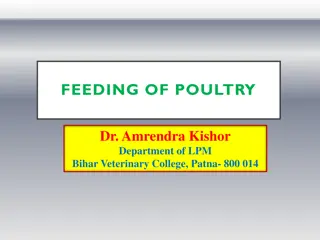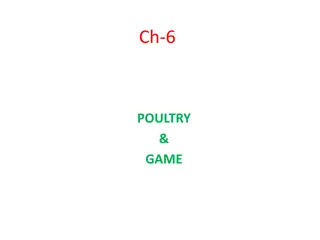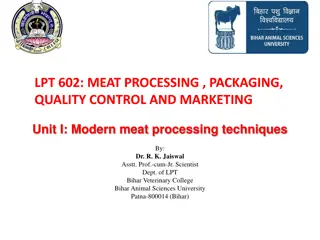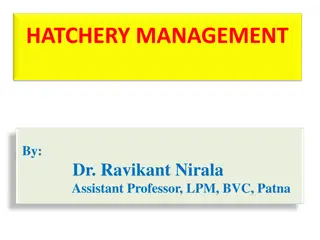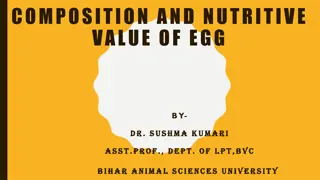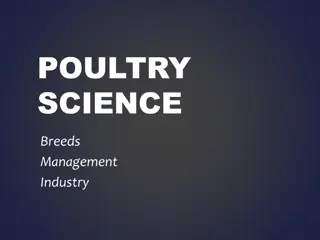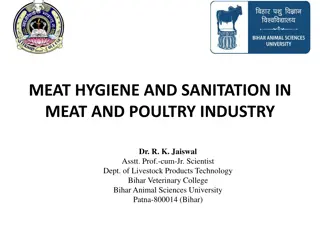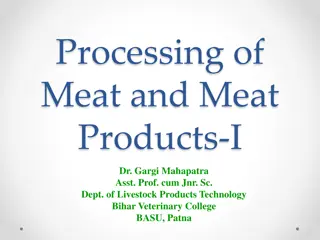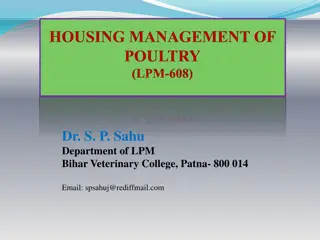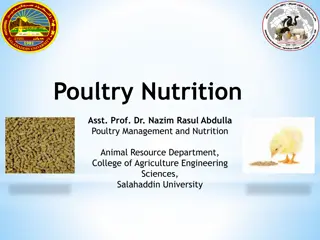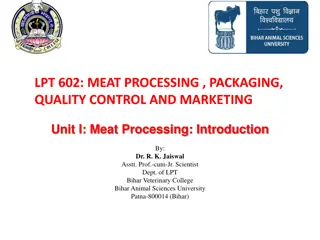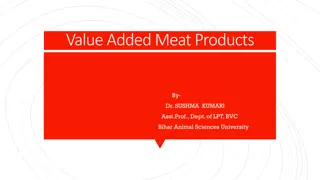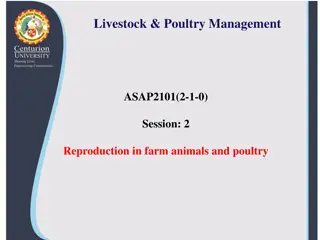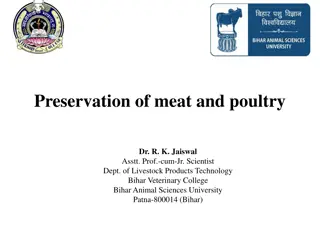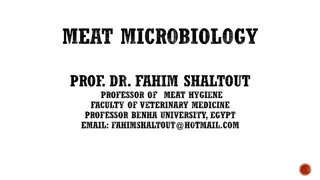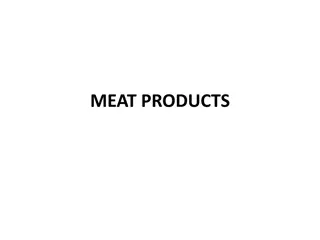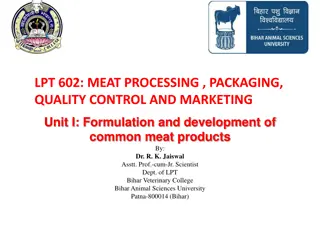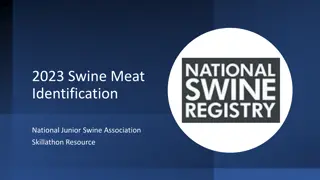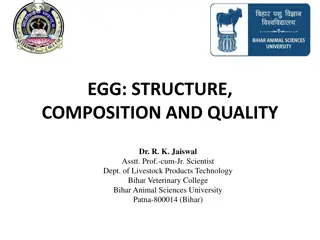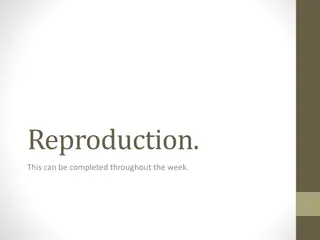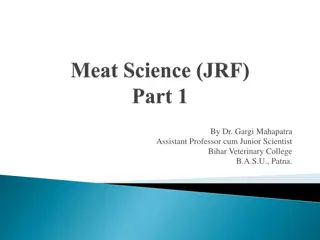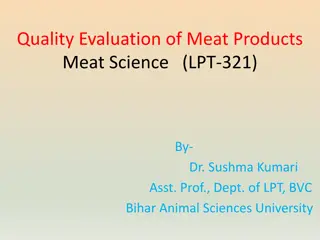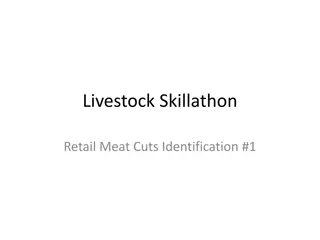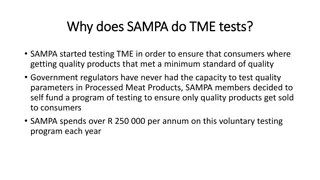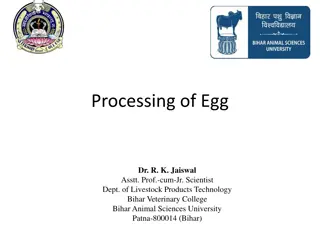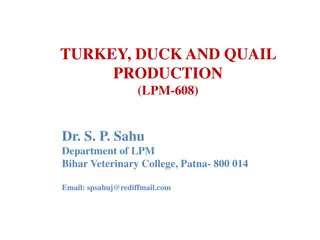Overview of Poultry Production: Eggs, Meat, and Systems
Poultry production encompasses the raising of domesticated fowl such as chickens, turkeys, ducks, and geese for meat and eggs. This includes caged and cage-free egg production systems, as well as meat production practices for broilers and other poultry. The industry faces scrutiny from animal rights activists due to concerns about living conditions and animal welfare.
Download Presentation

Please find below an Image/Link to download the presentation.
The content on the website is provided AS IS for your information and personal use only. It may not be sold, licensed, or shared on other websites without obtaining consent from the author. Download presentation by click this link. If you encounter any issues during the download, it is possible that the publisher has removed the file from their server.
E N D
Presentation Transcript
Livestock Production Cattle ranching and farming Dairy farming Hog and pig farming Sheep and goat farming Poultry and egg production Animal aquaculture
What is Poultry? Poultry: domesticated fowl raised for meat or eggs Chicken Turkey Ducks Geese Emus Ostriches Game birds
Poultry Production Egg production Meat production Broilers Turkeys Ducks/geese Importance of Poultry Industry
Egg Production In the U.S. alone, there are over 6 billion eggs produced each month There are different systems for egg production: Caged egg production Cage-free production (free-range)
Caged Egg Production System Hens are kept in cages with a sloped floor that allows eggs to roll to the front of the cage to be collected Cages are typically the size of a filing cabinet drawer and holds up to 10 hens Caged egg production has caused major controversy between animal rights activists and industrial egg producers
Cage-Free Production System Sometimes called free range , this system allows hens to live outside of cages, and many have access to the outdoors Allows for more natural behavior such as nesting Also cause for concern from animal rights activists: hens are kept in crowded (stressful) conditions that often affects the hens health
Meat Production Chickens raised for meat are called broilers Other poultry raised for meat include turkey, ducks, and geese Meat chickens, turkeys, and fowl are generally kept in poultry houses to prevent predation, enhance feed efficiency, and facilitate bird management
Production Process Breeding Incubation Brooding and rearing Feeding and nutrition Processing
Breeding Meat poultry is bred for: Good meat type Fast growth Disease resistance Good conversion of feed to meat Different strains of chickens are used for egg production and bred for: Egg production Large egg size Small body weight for good conversion of feed to eggs
Breeding Broiler and layer side by side
Incubation Eggs are placed in trays in incubators that automatically rotate the eggs Eggs are transferred to hatching trays 3 days before expected hatch After hatch, chicks are placed onto conveyor belt for chick servicing: Sexing Vaccination Beak trimming
Brooding and Rearing Day-old chicks need warmer temperatures; typically kept at 85-87 degrees with a radiant brooding heater Chicks are kept on floors with litter made of soft materials such as pine shavings or rice hulls Chicks are fed from trays of water and feed until they learn to eat from timed food and water delivery systems
Food and Nutrition Poultry diets consist of: Grains like corn, wheat, oats, and barley Protein supplements Mineral supplements Protein supplements include: Meat meal, fish meal, safflower meal, feather meal, and canola meal
Processing After rearing, chickens are moved to either processing plants or laying houses At processing houses, chickens are removed from transport racks and processed: hung on shackles, rendered unconscious in an electric bath, bled, and scalded for easier feather removal After feathers are removed, carcasses are moved to a different line for processing and packaging
Poultry Industry Increase in processing efficiency: Industry requires increase in processing speed and technology Modern poultry plants have streamlined operations to increase processing efficiency Integration of the broiler industry: Vertical integration (the control of two or more stages of production by one management company) 80% of all commercial broilers are produced by the top 10 production companies
Vertical Integration of the Poultry Industry



